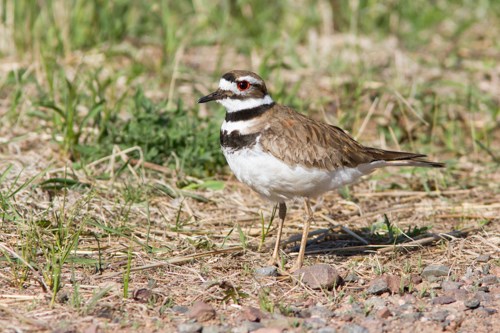
NPS/Gordon Dietzman IntroductionThese beautifully marked, long-legged birds are classified as shorebirds, but are most often found nesting and foraging in upland areas. Their nests are nothing more than shallow scrapes on bare earth. Occasionally, the nests are located in graveled drives, on the edges of graveled parking lots and roads and even stone-covered flat roofs. The one thing these nests have in common is that they are very difficult to find. The usual clutch of four eggs are beautifully camouflaged with their speckled shells and a searcher must be careful that they don’t find the nest by accidentally stepping on it. Killdeer are perhaps best known for their spectacular “broken-wing” distraction display. If a predator, or human, approaches the nest, the adults may suddenly appear uttering loud calls and dragging a wing as if it is broken. But watch carefully—during the ruse they often switch wings. Regardless, the predator, seeing an easy meal, or the human, wanting to help the “injured” bird, find themselves chasing a bird that somehow remains just out of reach. Once the bird has led its pursuer away from the nest, it suddenly discovers new-found health and flies away circling back to the nest. If you find a killdeer performing this display, it is best to leave the area not only reduce the stress on the bird, but to permit it to return to the nest to continue caring for the eggs or to gather up its nearby chicks. Fascinating Facts
Identification
| |
Last updated: October 8, 2021
